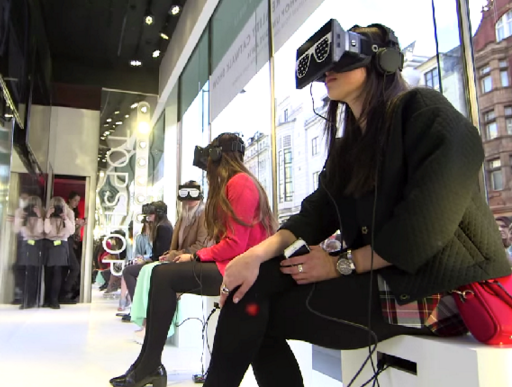By Glenn Taylor, Associate Editor

With #NRF16 now in the rear view mirror, solution providers
now have the chance to prove the value of the technologies they showcased
throughout the conference. Perhaps the most intriguing technology I came across
at the conference was virtual reality.
At the conference, iSoftStone
displayed its 3D Virtual Mirror, which was designed to enable shoppers to select
and ‘try on’ specific outfits without actually having to physically try on the
clothes. The solution provider claims that the tech has increased conversion
rates for clients as much as 33%, and even turns more consumers into brand
advocates.
The concept of virtual reality has been around for decades,
but has not been implemented within retail circles beyond a small scale, making
the potential uses for it appear boundless — and exciting. The long-awaited
release of the Oculus Rift brings a
wild card into the discussion, as consumers will now have the opportunity to purchase
and use their own headset to play games, watch movies or view a completely
artificial environment.
This artificial environment is the key retailers must
leverage going forward, as they can create a shopping atmosphere that will only
add to the in-store and e-Commerce experiences. Tommy Hilfiger has been the most prominent example of this,
offering a virtual reality experience with the Samsung Gear VR headset in
October 2015, enabling consumers to get a viewing of a fashion show held
earlier in the year.
As my colleague, Klaudia Tirico, indicated
in an earlier blog post, The Apartment
by The Line collaborated with SapientNitro to offer an e-Commerce experience
compatible with the Samsung Gear VR to create an in-store experience for
consumers at any time and location. This experience certainly introduces an
element that a typical mobile phone won’t be able to provide.
When discussing virtual reality, one has to take into
account the experiential side of retail that more retail consumers are
clamoring for. The reason why virtual reality has such potential is shoppers
are no longer just looking to shop; they
want to encounter a unique experience that will make the trip worthwhile. In
adding a supplementary setting to the mix, virtual reality builds on that
experiential concept and could give shoppers another reason to travel to the
store.
A form of virtual reality — augmented reality — has had moderate
success in enhancing the shopping experience thus far. Numerous retailers such
as American Apparel and IKEA have invested in the tech for
their mobile phones to illustrate what products look like in different colors,
or what furniture would look like when visualized in a household.
Augmented reality generally takes a more grounded approach
to the topic, with its function often carried out through a mobile app or on a
computer screen within a store. Users don’t have to use a clunky headset to get
into the tech, but its usage generally only affects a minimal part of the buying
experience. Virtual reality tech could further expand on these experiences to
give the consumer a literal 360-degree view of something they haven’t seen in
the store.
While virtual reality adoption has taken its time, as technology
adoption often does whenever expensive solutions gain hype, more retailers will
likely have to test the waters at some point if they aim to provide that
exclusive experience consumers are looking for.






